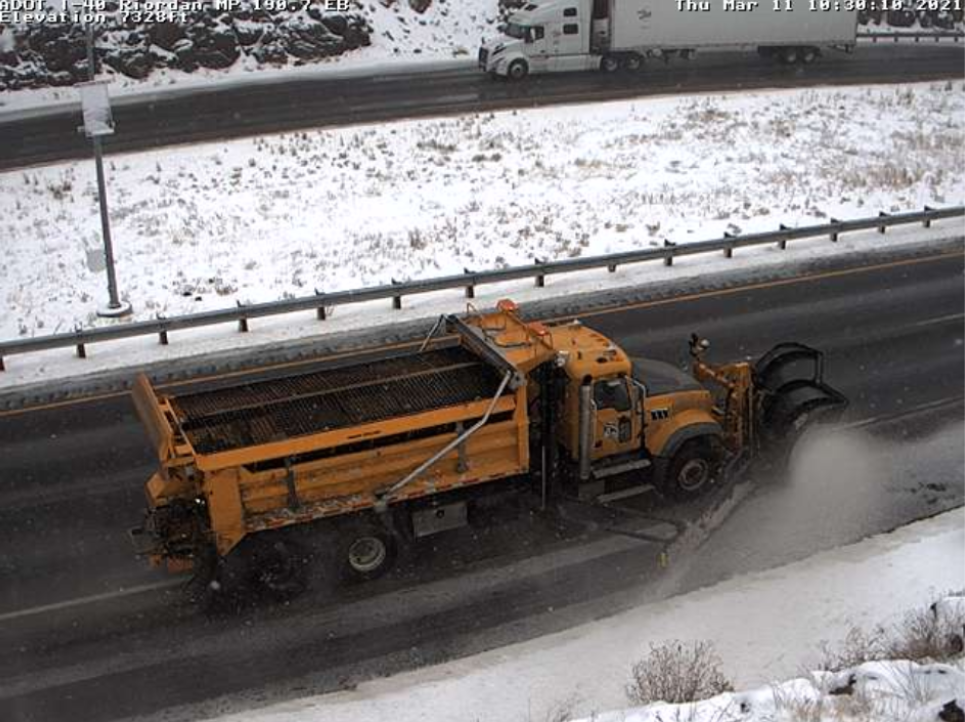Another ADOT acronym: RWIS
Another ADOT acronym: RWIS

We’ve all heard the classic adage: “You can’t be in two places at once.” While that’s certainly true on a metaphysical level, ADOT can subvert the old axiom through our virtual RWIS system.
RWIS, shorthand for Road Weather Information System, is an added tool ADOT crews use to gather real-time information about and make decisions concerning adverse weather events. Cameras located at RWIS sites throughout the state update multiple times every hour and provide a quick perspective of current weather conditions.
Among the many features of ADOT’s RWIS system are sensors that can read air temperature, pavement temperature, wind speed, wind direction and precipitation. The cameras attached to the RWIS sites can help detect visibility issues due to fog or smoke.
ADOT uses the information gathered from RWIS sites for real-time conditions reporting, forecasting, pavement temperatures and wind conditions. Knowing what the weather is like at a specific location helps crews know the proper treatment options, especially when it relates to snow and ice.
Dispatchers at ADOT’s Traffic Operations Center use the information obtained from RWIS to update real-time messages on our overhead message boards. In turn, the motoring public uses this to make informed decisions about their own travel.
Bottom line, the functionality of RWIS helps ADOT improve safety, organize operations and reduce cost.
The cameras connected to RWIS stations are similar to, yet separate from, ADOT’s AZ511 traffic camera system. RWIS cameras are used primarily for weather conditions rather than strictly traffic conditions.

There are 19 RWIS stations located strategically along Arizona highways. Most of them are placed on Interstate 40, where adverse conditions like snow are very common in the winter time. Arizona is one of many states in the Union that utilize the RWIS system. In fact, Iowa has 62 different RWIS sites while Minnesota (famous not just for its many lakes, but also lots and lots of snow) boasts an impressive 125.
Kevin Duby, ADOT’s Statewide Road Weather Manager and RWIS Coordinator, is particularly excited about the recent addition of grip sensor technology at RWIS sites: “This can help with even an already robust winter operation,” he says. “Grip sensor technology basically measures friction of the pavement. The lower the friction value, the less traction that we have on the roadway.”
Duby is confident that ADOT’s RWIS system will continue to provide benefits.
“The future looks bright and as technology changes and gets better, so do the operations," he said.
